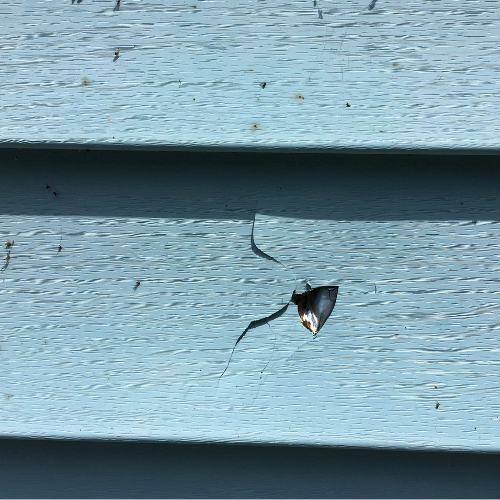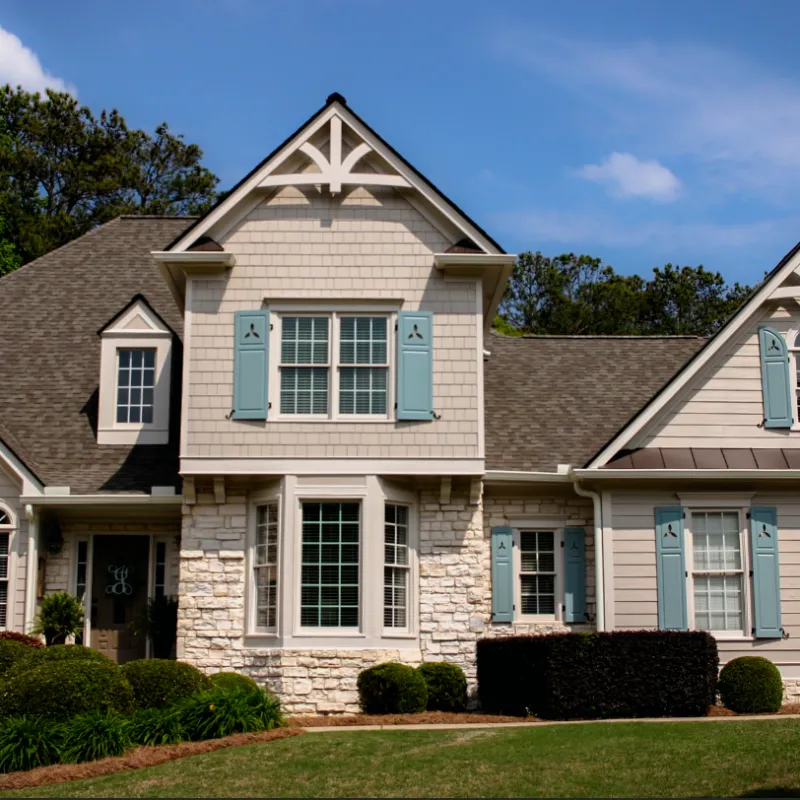4 Signs It's Time to Replace Your Atlanta Siding
When it comes to your home's exterior, the siding plays a pivotal role in protecting your property and maintaining its aesthetic appeal. Knowing when to replace your siding is essential to ensure your home remains in top condition. If you're noticing signs of wear and tear, it might be time to consider partnering with reputable Atlanta siding companies like Nelson Exteriors. Here are some signs that it may be time to consider replacing your siding:
1. Age and Wear
Siding materials, while designed to provide long-lasting protection for homes, do have a finite lifespan. Depending on the type of siding, this lifespan can range anywhere from 20 to 50 years. As siding approaches the end of its expected lifespan, homeowners should start considering the need for replacement.
Factors such as climate, exposure to the elements, and proper maintenance can all impact the actual lifespan of siding materials. For example, vinyl siding may last around 20 to 40 years, while the James Hardie fiber cement siding we proudly install can have a lifespan up to 50 years. Wood siding, on the other hand, may only last 20 to 30 years before requiring replacement.
As siding ages, it can become more susceptible to wear and tear, such as cracking, fading, or warping. These signs indicate that the siding is nearing the end of its useful life and may no longer be providing optimal protection for the home. By planning for siding replacement in advance, homeowners can ensure a smooth transition and avoid unexpected issues or damage to the home's exterior.
Proactively assessing the condition of your home's siding and staying aware of its expected lifespan can help you make informed decisions about when to begin the replacement process. This can help you avoid potential problems and maintain the long-term integrity and curb appeal of your home.
2. Visible Damage

When considering replacing your home's siding, it's important to be on the lookout for any visible signs of damage. Cracks, warping, or other physical deterioration can compromise the structural integrity of your home and lead to more severe problems if left unattended.
Cracks in the siding material, whether they are small hairline fractures or larger, more prominent splits, can allow water infiltration and create entry points for pests. Over time, these cracks can worsen, leading to further damage to the underlying structure. Similarly, warping or bowing of the siding panels can indicate a larger issue, such as foundation problems or moisture damage, that needs to be addressed.
Other forms of physical damage, such as dents, holes, or missing pieces, can also compromise the protective barrier that your siding provides. These issues can expose the interior of your home to the elements, increasing the risk of water damage, mold growth, and even structural instability.
3. Increased Energy Costs
If you've noticed a rise in your energy bills, it could be a sign that your siding is no longer providing adequate insulation. Over time, siding can become worn, damaged, or simply less effective at keeping your home properly insulated. This means that your heating and cooling systems have to work harder to maintain a comfortable temperature, leading to higher energy consumption and, ultimately, higher utility bills.
Identifying and addressing issues with your siding can be an effective way to improve your home's energy efficiency and potentially save you money on your energy costs. It's important to regularly inspect your siding and consider replacing it if it's no longer performing as it should. By investing in quality, well-insulated siding, you can help ensure that your home is better equipped to retain heated or cooled air, reducing the strain on your HVAC system and potentially lowering your monthly energy expenses.
4. Moisture Intrusion
Moisture intrusion can be a serious issue for homeowners, and it's important to regularly inspect your siding for signs of water damage. One of the key things to look for is the presence of mold, mildew, or rot, as these can all be indicators that your siding is no longer effectively protecting your home from the elements.
Mold and mildew growth can be a clear sign that moisture is penetrating your siding and creating a damp, humid environment that allows these fungi to thrive. This not only compromises the structural integrity of your siding, but it can also pose health risks to you and your family.
Similarly, rot in your siding is a telltale sign that water has been able to infiltrate and deteriorate the material over time. This can lead to further damage, such as cracks, holes, or even complete failure of the siding, leaving your home vulnerable to the weather.
By carefully inspecting your siding for these issues, you can catch any moisture intrusion problems early and take appropriate action to address them. This may involve repairing or replacing damaged siding, improving drainage around your home, or addressing any other underlying causes of the moisture buildup. Taking proactive steps to maintain your siding can help protect your home and ensure it continues to provide the necessary barrier against the elements.
Professional Siding Company in Atlanta
If you're located in the Atlanta area and are considering replacing your siding, it's recommended to consult with a reputable Atlanta siding company. Contact Nelson Exteriors today to assess your current siding, provide expert recommendations, and ensure a seamless installation process.
Understanding Your Needs: A Consultation with Nelson Exteriors
At Nelson Exteriors, our sales team prioritizes understanding your unique needs during consultations. We recognize that what you initially called us for may not always reflect your actual requirements. Our goal is to provide tailored solutions that truly fit your project. Whether you're considering a new siding installation or repairs, our experts are here to guide you through the process and ensure you get exactly what you need for your home. Let's work together to create the best outcome for your exterior project!
FAQ's
What is the expected lifespan of siding materials?
The expected lifespan of siding materials varies by type:
- Vinyl Siding: 20-40 years
- Wood Siding: 20-30 years (can last longer with maintenance)
- Fiber Cement Siding: 30-50 years
- Metal Siding: 40-70 years
- Stucco: 50-80 years (with proper maintenance)
- Brick: 50-100 years (very durable)
What warranties do you offer?
We offer many warranties on a variety of services. Click here to learn more!
Why is my house paint bubbling?
Bubbling paint on your house can be caused by several factors:
- Moisture: Water trapped under the paint from high humidity or poor drainage can lead to bubbles.
- Poor Surface Preparation: If the surface wasn't cleaned or primed properly before painting, it can cause adhesion issues.
- Old Paint: Applying new paint over old, deteriorating paint can lead to bubbling.
- Temperature Changes: Extreme heat or cold can cause paint to expand and contract, leading to bubbles.
- Using the Wrong Paint: Using exterior paint indoors or vice versa can result in poor adhesion.
- Improper Application: Applying paint too thickly or in direct sunlight can also contribute to bubbling.
What are the most popular siding materials for Atlanta homes?
The most popular siding materials for Atlanta homes are vinyl, fiber cement, and wood. Vinyl siding is durable (not against hail or rocks from a lawnmower), low-maintenance, and cost-effective (if the cheaper, non-insulated versions are used). Fiber cement siding is also a popular choice for its durability and resistance to fire, pests, and weather. Wood siding, such as cedar or pine, provides a classic aesthetic but requires more upkeep.
How long does siding replacement typically take?
A full siding replacement project on an average-sized Atlanta home usually takes 4-8 business days to complete, depending on the scope of work and weather conditions. This includes removing the old siding, making any necessary repairs, and installing the new siding (painting new siding not included in timeline; double the time when painting is included).
What factors affect the cost of siding replacement in Atlanta?
Key cost factors include the siding material, home size, accessibility, and any required structural repairs. Additional factors are labor costs, disposal fees, and permits. Higher-end siding materials like wood or fiber cement will be more expensive than basic vinyl. Pre-painted fiber cement, like ColorPlus from James Hardie, also costs more than the primed version of HardiePlank.

